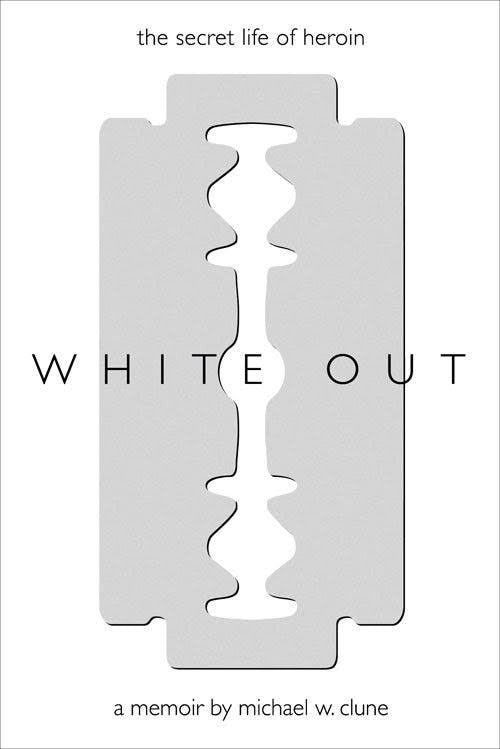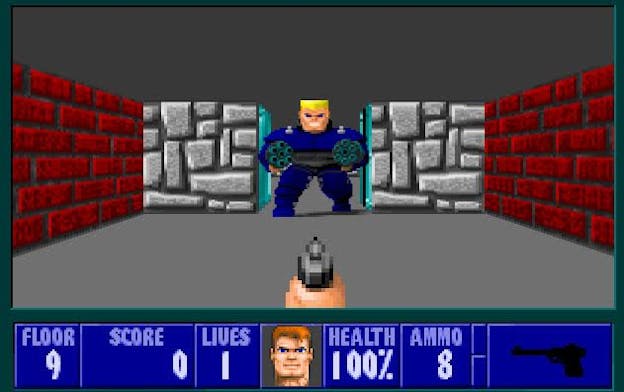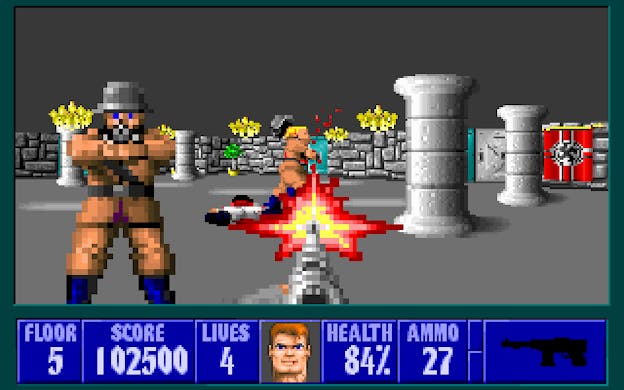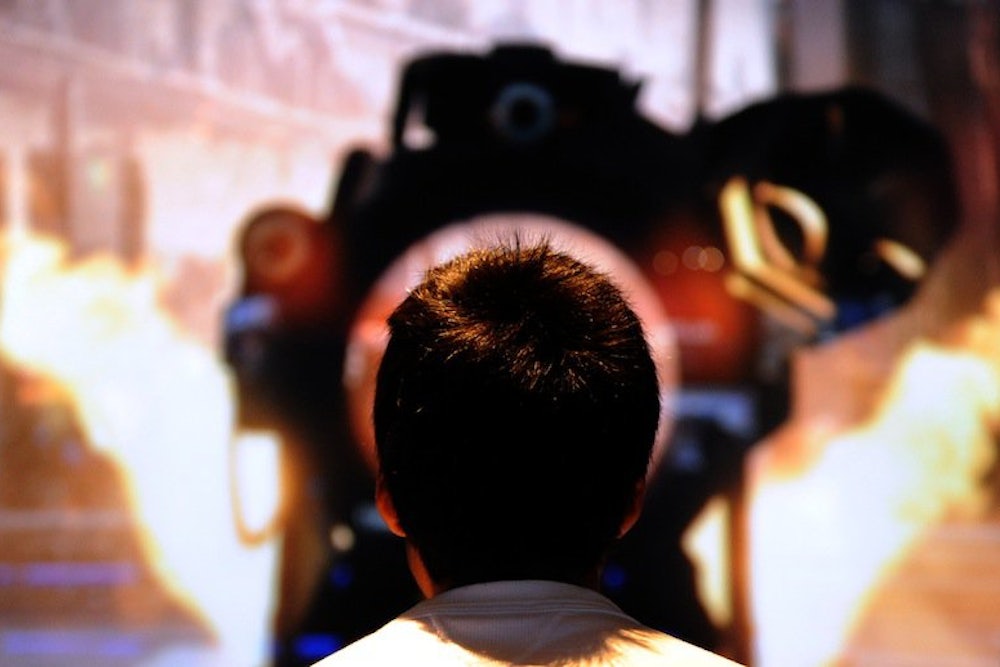It’s hard to remember a time before screens. Instantaneous global connection has gifted us sturdy but incorporeal bodies, which we’re only just becoming accustomed to—our new forms never tire, never ache, never need regular physical and dental exams, never age, never die. They’re the stuff of our personalities that ends up online, constructed from emails, tweets, blog posts, Facebook statuses, gchats, forgotten Yahoo! inboxes, likes, favs, retweets, Instagram comments, tagged photos, events we’re “maybe attending”, e-tickets, order confirmations, clickthroughs, Spotify playlists, read receipts, unreturned iMessages, Second Life avatars, and the like, the downloadable materials of an uploaded life. If this isn’t the real accomplishment of the latest industrial revolution, then what is?

Michael Clune’s most recent book, Gamelife, is a memoir of life as Player 1, the wizard behind the screen, given a new anatomy via the miracles of circuitry. It’s set in the ’80s, against that decade’s regular moral panics and constant nuclear paranoia; the Cold War and Reaganomics and Michael Jackson and the original Super Mario Brothers. It was both the golden age of arcade gaming and the dawn of home computing1. Clune was seven years old when he picked up his first game, Suspended: A Cryogenic Nightmare2, a “text-based adventure” intended for ages 16 and up. In the game, the player is tasked with preventing a vague catastrophe from worsening, by interacting with the world through five robots that each have distinct functions. Despite the rudimentary premise, it was an important beginning.
For Clune, games aren’t escapist. They’re more real than reality, because they purify life into refined elixirs, concentrates of experience. “[...] Suspended was gone in the way of being everywhere,” Clune writes at the end of the first chapter—gone, he means, in the way that you stop noticing something you constantly see:
I played it at the right time. I don’t know what would have happened if I had waited until I was sixteen, but playing it at seven changed me. It gave me a new direction to grow. While my parents and friends and teachers were helping part of me to grow up towards the people, another part of me had begun to grow out, away from them.
For you non-players, this is the eldritch magic of video games. They refine your desires, reprogram them, inform you what you want—each game shows you what you should want, what you should need, gives you a new value system to adhere to. They grant you a scaffold, a new, strong skeleton where you can anchor new muscles and graft new skin. In the garden, god made Adam and Eve; many generations later, an Adam created a virtual garden and made a model of his body out of pixelated mud. Clune came along just after.
If it sounds as though I’m likening playing video games to a spiritual experience, that’s because I am. “Insofar as I have a “spiritual” side, I think it was shaped by the experience of playing computer games from a young age,” Clune said in a conversation published in The Believer. The first generation of players like Clune, who started when game technology had only just become a recreational, at-home pursuit, often found their pastime worried about and attacked unless they were playing one of a few acceptable games, like Super Mario Brothers or Where in the World Is Carmen Sandiego? In general, gaming wasn’t seen as healthy or normal. (There’s a darkly funny scene in Gamelife where Clune’s mother takes away one of his favorite games, The Bard’s Tale II, because she fears it has something to do with demons.) That attitude persisted well into the ’90s and early ’00s, before everyone had a relatively powerful gaming device in their pockets, and it created a class of gamers for whom games took on a kind of secret, fetishistic power. Games weren’t play. They were serious. They were a way of life.
This is where Gamelife draws its strength. The plot is Clune’s childhood as understood through his fascination with seven beautifully complex games, each of which taught him about a new piece of the world: Suspended, The Bard’s Tale II: Destiny’s Knight, Ultima III, Wolfenstein, Elite, Pirates!, and Might and Magic II. From The Bard’s Tale II, Clune learns how numbers can make fantasy realistic, lifelike; from Ultima, he begins to understand the secret power of maps and the authenticity of two dimensions. From Pirates! Clune’s introduced to the alchemies of trade. Each game shepherds him through life—the various traumas of middle school, his parents’ divorce, the heat of a globally warmed summer, the isolation of the suburbs, hopeless pool parties, college, grad school, a grad school breakup, and, presumably, beyond.
In each game too, Clune finds a new body, a new self. And this isn’t the first time he’s written about the transformation: Gamelife is Clune’s second memoir. His first, White Out, is an account of Clune’s time as a heroin addict in Baltimore, MD, when he was a graduate student. It’s an infectious tale; Clune’s prose there is ecstatically figurative, just as it is in Gamelife. “Dope gives me a new, dope body,” Clune writes. “And the way the world looks from deep inside the dope body! From high atop the white tower. The world. It would break your human heart to see it. Everything so smooth, gleaming so smoothly.” And on:
Dear reader, I floated like an astronaut in the white world. October 1999. I sat on my ratty couch reading Walden for my seminar the next day. Imagine me there in my white space suit, heavy sound of mechanical breathing, my white eyes dim behind the glass shield of my helmet, the book spread out before me. I unhooked the ropes of words from the lines on the page, strung them between my bookshelf and the stars in my window, and they began to glow.
From Gamelife:
Looking through the car window at the blue sky. What was blue color outside was a quiet feeling inside me and I thought: I will stay like this forever. Peace, I thought. Like they say in church. Peace. [...] Nothing can harm me (peace) nothing can bother me. There’s something inside me that won’t change. The unchanging thing inside me has a color. The color is sky blue. I looked out the windows at it.
And when my father got back in the car the feeling lasted, this feeling of a feeling that lasts. It was the feeling that the sky-blue feeling would last forever. That was the feeling I had looking at the sky. Strange, a feeling curled around on itself, like the Aztecs represent the sky as a blue snake eating its tail.

As is probably apparent from these passages, White Out and Gamelife arouse feeling in many of the same ways. In each the world seems imbued with a particular color, associated with a single mood: blue in Gamelife, white in White Out. There are the feelings of security in outside entities (Gamelife’s games, White Out’s heroin); there are prosthetic bodies (Gamelife’s “computer role-playing game bodies” and White Out’s “dope body”). And then there are the whole secret worlds inside closed experiences (Dungeons & Dragons, being high). The books are written past each other, though—a savvy decision, as introducing a heroin addiction into a video game book would derail the plot, and vice versa. Aside from a paragraph-long mention in Gamelife, Clune doesn’t address the future he knows is coming.
To be absolutely clear: I’m not trying to equate heroin addiction to playing video games, because that’s an idiotic comparison to make. But Clune’s prose is remarkable enough that you can’t help but consider doing it, maybe, just for a second, just to see how right it feels—and Clune addresses both his subjects in the same transcendent manner. There’s no one who writes quite like him.


But the way he writes is also Gamelife’s largest problem. If you’re not already invested in video games—though there’s a good chance that you are, given the medium’s rapidly changing demographics—you might find Clune’s poetic descriptions of play hyperbolic and possibly insincere. About the game Wolfenstein, a first-person shooter where the entire objective is to shoot enough Nazis to murder Hitler, Clune writes:
And every bullet I shot into a Nazi was a nail. Nailing me to the cross of WAD [space]3. Every rocket I fired at a Nazi tank was a nail. Every shotgun blast I sent into Hitler was a nail. Nailing me to the cross of WAD [space]. The cross is the universal symbol of transformation. To be nailed to a cross is to suffer magical transformation. Shoot a Nazi! Shoot a Nazi! Shoot a Nazi! Mystical blood flows from my human wrists! Shoot a Nazi! I hang from the cross of WAD [space]!
World War II games have this advantage over Christianity: It is not your own suffering that weds you to the cross of redemption. It is the suffering of Nazis.
WAD [space] only works if you’re a true believer, if you’ve signed yourself over to its church.
Poetic descriptions aside, there’s another hitch in Gamelife. For a lot of people, the experience Clune writes about—the freedom of gaining a new, digital self—isn’t easily accessible. Women on the internet who like to play video games, for example, are routinely targeted by a large cohort of rogue misogynists who call their group Gamergate. They’ve sent death and rape threats to prominent game critics, and harassed writers off the internet4. Gamergate’s reprehensible actions have brought renewed scrutiny to a field dominated almost totally by (white) men, a discipline whose fans actively seek to purge its heterogeneous elements. Adequate representation is crucial for feeling like one belongs, for feeling like you could actually transcend yourself and find a home in a virtual world. The fact is that games are not quite so inclusive or transcendent as this book would have you believe.
Gamelife never addresses those problems, or why it was that Clune was able to so totally immerse himself into this culture, to inhabit these new bodies that had been designed specifically for him, by people who looked like him for people who look like him. Of course: Gamelife is a memoir, and Clune isn’t attempting to redress or reconcile the problems with video games and game culture. But that doesn’t feel like enough of a justification, given today’s sociopolitical climate—even a gesture at the wider problems would have been enough.
Aside from that, Gamelife is a spectacular accomplishment. It’s written in a kind of yearning voice that defies easy classification as simple nostalgia; it reanimates the old discs and cartridges convincingly, without cloying. The game Elite provides perhaps the best example in the book: From it, Clune learns that the digital self has a material existence.
Elite was released in 1984. Clune had grown a little since Suspended but was still a child; the game was set in space, where you could be a pirate flying out among the stars. In Gamelife, Clune writes that the most frustrating and remarkable thing about Elite was docking one’s ship at a space station, seeing through your own death.
Keep your thumb on the spacebar. The angle’s gone. Stars. Nothing but stars. Only your sensor shows how close you are now, the giant white dot of the station almost covers the sensor’s centerpoint. Keep going. You see stars through the space station. You see stars through the space station until the moment you shatter and you will see stars through the space station after your ship shatters and “game over” dances across the starfield.
You see through the surfaces that kill you. They’re not there. They trick your spaceship, true, they trick your body. But they’re not really there.
On Earth, he continues, it’s the same. I agree with him. You can’t see your virtual body, but that doesn’t mean it’s not there. That doesn’t mean it’s not real. Invisible electromagnetic waves find their way to space eventually, errant transmissions on journeys that will eventually span our galaxy and the galaxy after that and the infinite distances between that and whatever else is out there. These fragments of our bodies will live forever. For now, though, it’s enough to keep your thumb on the spacebar. Look at the stars and imagine yourself among them. This is a way of life.
In 1983, the same year Suspended was released, the North American video game market went into freefall. Revenue peaked at $3.2 billion in ’83; by ’85 (the debut of Super Mario Brothers), that number had dropped to $100 million, and many feared the market would never recover. Spoiler: It did.
If you’re interested, you can play an online version of the game here. (And if you, like me, are easily frustrated, here is a link to a very useful walkthrough.)
The default control scheme for many computer games: W moves your character forward; A moves him left; D moves him right; space fires.
There are countless other examples of this kind of abuse; Lisa Nakamura, a digital humanities scholar, has written extensively about the problem of racist and sexist attitudes in gaming. It’s not an outlier. The problem is widespread.
